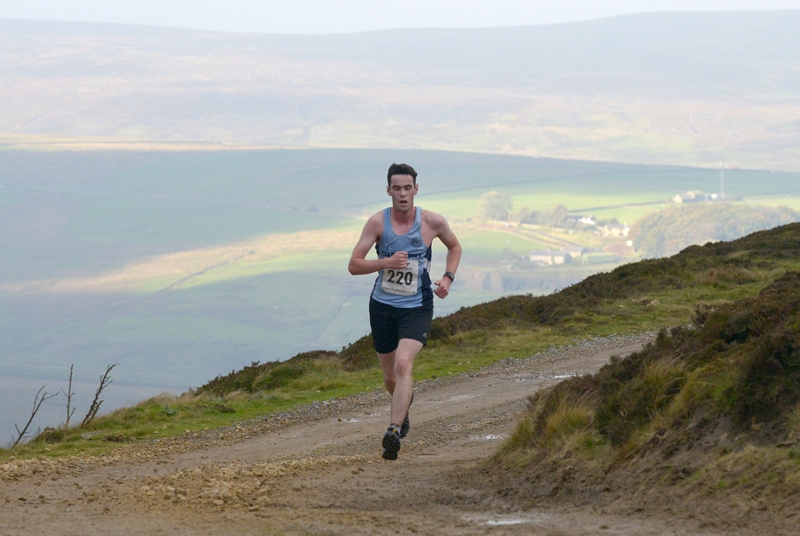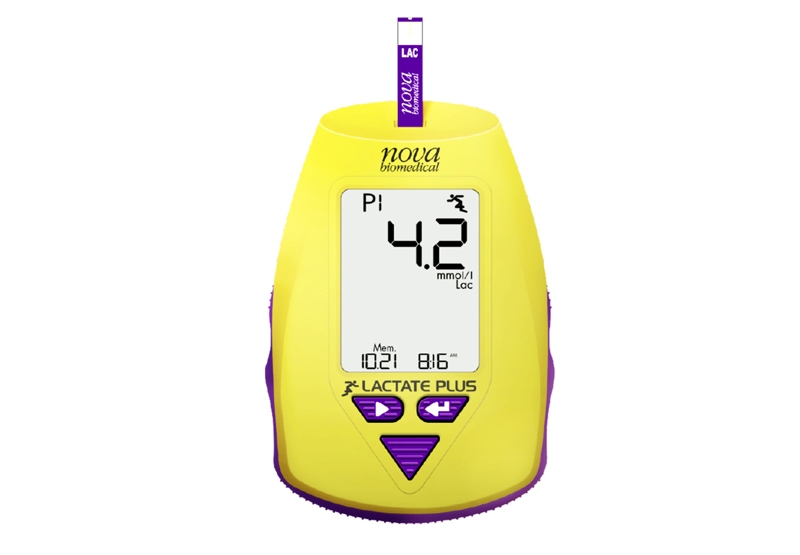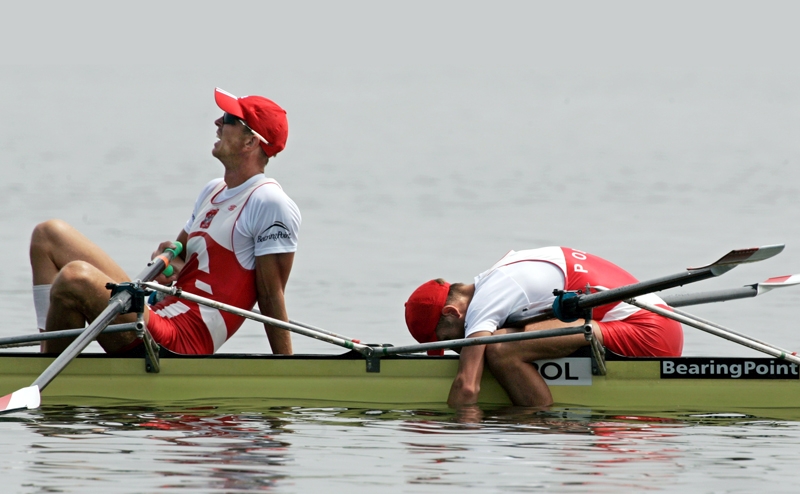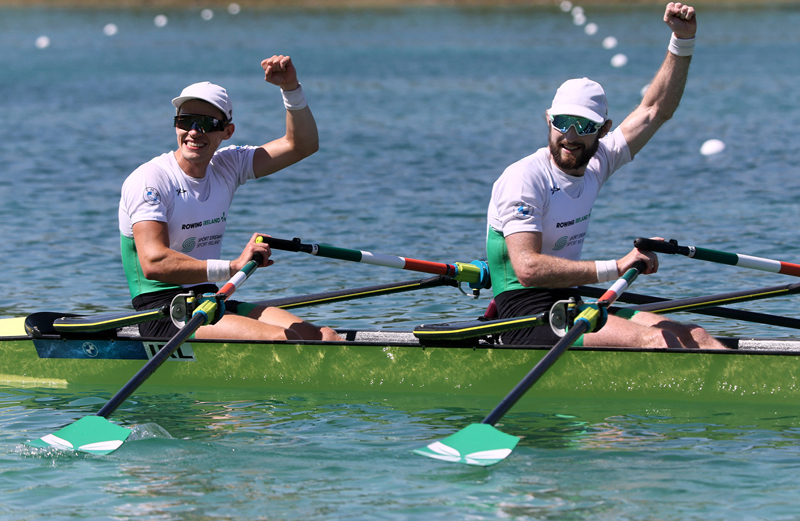You are viewing 1 of your 1 free articles. For unlimited access take a risk-free trial
Tame your tempo

Rick Lovett explains how science can improve your threshold training
Tempo runs have long been a staple of endurance training. As far back as the 1960s, Nike co-founder Bill Bowerman got his University of Oregon distance runners to do 3-mile ‘up-tempo’ runs on the track during the fall and winter off-season, recalls Bob Williams, who was the conference-winning steeplechaser on Bowerman’s 1967 team.
But such runs didn’t really come to the running world’s attention until the early 1980s, when Swedish exercise physiologist Bertil Sjödin had eight experienced distance and middle-distance runners incorporate similar 20-minute runs into their training schedules once a week(1). Sadly, Sjödin didn’t think to have his runners do before-and-after time trials, but he did discover that 14 weeks of these kinds of workouts improved performance by a whopping 4 percent—the equivalent, for his good-but-not-elite runners, of chopping a 17min:45sec 5km personal best down to 17mins:00!
Suddenly, everyone wanted a piece of Sjödin’s magic bullet, and tempo runs leapt from obscurity to de rigeur. However, there was just one problem, and that was nailing down the prescription; what exactly is a tempo run? And is 20 minutes the ideal duration, or do others work equally well, if not better? Even today, if you poll a dozen coaches, you’re likely to get a dozen different answers. For some, a tempo run is any moderately fast run of at least 20 minutes. For others, it’s running at race pace - a wildly different pace for marathoners compared to 5km runners. Still other coaches believe that a tempo run is 10 to 30 kilometers at marathon pace. For Bowerman’s 1967 team, it was three miles at 3 - 4 seconds per lap slower than race pace. But for the elite athletes in America’s Mammoth Track Club (which has included US marathon record holder Deena Kastor, New York City and Boston marathon winner Meb Keflezighi, and Greek 10,000-meter Olympian Alexi Pappas), it’s the hardest pace you can maintain for 40-60 minutes(2).
All about lactate
Whatever the diversity in coaching methods, Sjödin’s study put the spotlight on blood levels of a naturally occurring chemical produced in the body during exercise known as lactate. It’s a substance with a bad reputation. Over the years, it’s been blamed for everything from sore muscles to exhaustion. However, in treadmill tests, if a scientist injects lactate into someone, they don’t suddenly get dead legs. Instead, nothing much changes. And that’s because lactate is simply a byproduct of the first step in glucose metabolism, and as such it is a fuel. To put it another way, lactate still contains a lot of energy that the muscles can use (see figure 1).Figure 1: Lactate as fuel (a simplified schematic)*

During intense exercise, lactate is readily produced in fast-twitch muscle fibers (those associated with power and speed). However, this lactate can be shuttled across muscle cell membranes to be oxidised for energy by slow-twitch (endurance) muscle fibers – provided there is sufficient oxygen available. This lactate can become a fuel source. (*adapted from GA Brookes Med Sci Sports Exerc 1986. 18(3) 360-8)
But unlike glucose, whose first burst of energy can be released anaerobically, lactate only produces energy if it’s oxidised. If all you’re doing is picking up the channel changer to tune in to your favorite programme, lactate will be produced, but your body will burn it up almost immediately. Even when you’re jogging, not much finds its way into the blood. But at higher exercise levels it starts to accumulate, and by the time you’ve reached the pace you could hold in a race lasting about an hour—somewhere between 10km and half-marathon pace for most people—it starts to rise more quickly.
Lactate itself may not make you tired, but fatigue and rising lactate levels do go hand in hand. Training your body to use it more efficiently may therefore be a key to faster performances, which is exactly what lactate training, in all its varying forms, is intended to do. Nor is this simply theory; research also connects lactate threshold (the pace at which lactate levels start to rise) to racing performance. A 2013 Spanish study, for example, found a strong correlation between lactate threshold and 10km times for 22 nationally and internationally competitive runners (average time 31mins:35secs), with each ‘10 seconds per mile difference’ in lactate threshold corresponding to a 70-second difference in their personal bests(3).
The blurry threshold
Sjödin’s landmark study focused on the pace (or velocity, which he called VOBLA) at which there is an ‘onset’ of blood lactate accumulation. But the term onset implies that the lactate curve has a sudden upward kink. But actually, this curve is an upward bend that Halliwill compares to a hockey stick - and a ‘blurry, rounded-out hockey stick’ at that. Part of the reason why coaches can’t agree on the perfect tempo run is that nobody’s quite sure which part of the hockey stick’s curve is the true threshold (see figure 2).Figure 2: The blurry threshold

Rather than a sharp inflection point, lactate accumulation curve resembles more of a hockey-stick shape, which makes the precise determination of the perfect tempo pace quite difficult!
In fact, there are at least four definitions spanning what, for most runners might be a 20 to 40 second-per-mile range in paces:
- LT0. This was Sjödin’s technical definition of VOBLA: the pace at which blood lactate hits 4.0 millimoles (mmol) per liter. For most runners it’s the fastest of the four paces, and therefore the one most appropriate for shorter tempo runs such as Sjödin’s 20-minute workouts.
- LTDmax. This uses geometry (see diagram) to find the point of maximum curvature in the “hockey stick” bend. A study of Australian rowers found that it came in at slightly lower effort than LT0(4).
- LTsustained. Blood lactate doesn’t change only with pace. If you’re working hard, it rises steadily as you continue to run. If you’re jogging, it spikes initially, then declines as you warm up. In between, there's an effort level at which it remains steady for 20 or 30 minutes - something that appears to happen at about 3.0 mmol(5). South African exercise physiologist Tim Noakes has argued that this might be the true “threshold” at which one should train(6).
- LTvisual. This is the pace at which the lactate curve first starts bending upward. For many runners it isn’t far off from marathon pace.
Finding YOUR Pace
Portable blood lactate testing kits (similar to diabetics’ glucose meters) are available online for about £240 ($300US), and can be used to determine your lactate threshold by testing your blood at a variety of paces. But there are cheaper and less painful ways to find the right pace range. Olympic coach Alberto Salazar has described the ideal pace for a 20-minute tempo run as “fun fast.” About the time it ceases to be fun, it’s over. Other ways to estimate the right pace include:- Running a race that lasts approximately an hour - Your pace in that race, says Jack Daniels, author of Daniels’ Running Formula, is your lactate-threshold pace. Most people will find it to be somewhere between 10K pace and half-marathon pace.
- VDOT tables - These are the core of Daniels’ ‘formula’. Derived from work done four decades ago with his then associate Jimmy Gilbert, they estimate the maximum oxygen uptakes (VO2max) associated with a wide variety of running performances and distances,. The tables use them to recommended training paces, including threshold paces. If you don’t have the book, an online calculator can be found at runsmartproject.com/calculator/.
- Conconi test - This uses a heart-rate monitor to measure your heart rate at a variety of paces, plotting the result on graph paper. At slow-to-moderate paces, your heart rate should increase linearly with pace. There comes a point, however, where it starts to level off, even as you speed up. That pace, Italian biomedical researcher Francesco Conconi argued in a 1982 paper, is a good measure of when you are starting to go anaerobic—or, in other words, reaching your lactate threshold(7). (And yes, this is the same Francesco Conconi who later got caught up in doping scandals in cycling.)
- 3200m time trial - This comes from a study that compared the results of such time trials to lab-measured lactate threshold curves(8). It found that threshold pace (in meters per minute) can be calculated using the formula: 5 – [20.82 x 3200m time (in minutes)]. However, this test should be used with a grain of salt. Not only are the units a bit hard to work with, but it tends to produce paces substantially faster than those you’d get by applying the same time trial to Daniels’ VDOT tables. At least one researcher has suggested that its results may need to be slowed down by about 10 percent. (He found also the same problem with the Conconi test.)(9).
- 30-minute time trial - Like the Conconi test, this is heart-rate based, requiring you to track your heart rate through a 30-minute solo time trial—with the emphasis on solo. “Doing this as part of a race or with training partners will change the outcome,” says the test’s creator, U.S. cycling and triathlon coach Joe Friel (presumably because the competition will turn the time trial into a race, producing an overly fast result)(10).Ignore your heart rate during the first ten minutes, when you’re still warming up. What you want is its average during the final 20 minutes. This, Friel says, is what you want to duplicate in tempo workouts.
Putting it into practice
Applying the sometimes-conflicting science to training takes us back to Bowerman’s original insight. Tempo runs are neither races nor jogs, but lie somewhere in the middle. Some are more ‘fun-fast’ than others. Some, especially for marathoners, are pretty tough. But here are some options:- Classic 20-min tempo run - This is what Sjödin did, and it’s still the go-to for many people. The goal is a steady pace at your best estimate of threshold pace/effort.
- Predator runs - Rather than running at a steady pace, these start slowly and speed up. Some coaches call them progression runs, but Scott Simmons, coach of the American Distance Project in Colorado Springs, Colorado, prefers to call them predator runs. Start at about a minute per mile slower than current 10km pace, then speed up, mile by mile. But don’t push too hard; it’s not a race. Total distance depends on your race plans; try something between six and ten miles, starting at conversational pace and then build up. Somewhere along the way, you’ll hit threshold.
- Tempo repeats - The idea is to run a number of repeats, substantially shorter than 20 minutes, on short recoveries. The pace is lactate threshold or a bit faster (especially for repeats of 1600m or less) and the recoveries are truly short. One of my favorites is 600m runs on 20-25 second recoveries, but you can also do 1200m on 45-second recoveries, 1600m on 60-75 second recoveries, 2000m on 90-second recoveries, or 3000m on 2-2½ minute recoveries. If you’re looking for a formula, it’s to limit the recovery to about 15 to 20 percent of the time in the preceding interval. Total volume starts at 4 miles, which, with the rest breaks, is the equivalent of a 3-mile tempo run. If you’re a high-volume runner, it can be built up to as high as 10 percent of your weekly volume (and some runners go higher than that).
- Long tempos - These are controversial. In the second edition of his book, Daniels had a chart showing how to adjust pace for tempo runs of longer than 20 minutes. For 25 minutes, he suggested that a 38-minute 10km runner should slow down by 5 seconds per mile. For 30 minutes it was 8 seconds per mile. For 35 minutes, 11 seconds--etc, all the way up to 21 seconds per mile for an hour-long tempo. But in his current edition, he discarded long tempo runs in favour of not going any farther than 20 minutes in any given tempo bout. If you want to do more, he now suggests, take a break and repeat as many times as you want—in essence breaking a long tempo run into 20-minute tempo intervals.
- Marathon-pace runs - These are an extreme case of ‘long tempos’, primarily applicable to marathoners and half-marathoners. The idea is to run tempo-style runs at marathon pace, building from a few miles to an hour or longer. A common way to do this is by running a half-marathon as a ‘tune-up’ a few weeks before the marathon, trying to hold your pace to not much faster than your planned marathon pace. The science of this is not well established, but it might have something to do with applying the LTsustained effect to very long workouts. Or maybe it’s mostly about prepping the brain for the stresses of a going hard not just for a few minutes, but for hours. Either way, most serious, high-volume marathoners are going to want to experiment with workouts of this type.
What about cyclists and triathletes?
The physiology of threshold training for cyclists and triathletes is almost certainly the same as for runners. But thanks to the vagaries of wind and terrain, tempo workouts need to be based on effort and/or heart rate rather than pace. That said, all of the classic workouts should still work, whether they be 20 minutes at threshold effort, predator workouts, tempo intervals, or longer efforts at hard but slower effort levels.Case study: Chris Byers

Chris Byers is a 50-year old masters runner from Valparaiso, Indiana, who has been racing for more than 35 years. Recently, injuries and aging have impeded her ability to recover from the traditional intervals she once loved. And 2017-18’s unrelenting, snowy winter made fast running both difficult and dangerous, anyway. Frustrated, she decided to devote this year’s Boston Marathon buildup to tempo running, ranging from such Daniels-inspired workouts as three sets of 3 miles to 8-mile predator runs and other fast-paced runs as long as 12 miles. When weather allowed, she went outside. When not, she ran on a treadmill or an indoor track. “I loved the feeling of the hard but controlled effort,” she says. “Each week my paced inched downward, and for the first time in months I was looking forward to my hard-run days.”
Come race day, she, like all Boston competitors, was hit by cold rain and ferocious headwinds. But to her surprise, the splits flew by. “By the time I crested Heartbreak Hill (a little after mile 20), I knew I would finish comfortably. Remembering the feeling of being halfway through an 8-mile tempo run and holding the difficult but doable pace for four more miles gave me the confidence to push hard to the finish,” she says. And not only did she finish, but despite the atrocious weather she beat her qualifying time (from last year’s Boston) by more than four minutes - something she attributes the cumulative impact of all those tempo runs!
References
[1] European J. App. Phys & Occupational Phys. 49:459-57
[2] Monica Prelle, The Mammoth Track Club’s Famous Tempo Run, Runner’s World, 11 Sept 2017, www.runnersworld.com/tempo-run/the-road-to-glory
[3] Santos-Concejero, J., et al. 2013. Retos. Nuevas tendencias en Educación Física, Deporte y Recreación, 23:67-69
[4] Bourdon, P. Blood Lactate Thresholds: Concepts and Applications. 2013. Book chapter in Australian Institute of Sport, Tanner, R., Gore, C. Physiological Tests for Elite Athletes, (2nd Ed). Human Kinetics
[5] Journal of Sports Sciences 1993. 11:49–55
[6] Noakes, T. Lore of Running, 4th Ed. (2003) p 159
[7] Journal of Applied Physiology 1982. 52(4):869-73
[8] International Journal of Sports Medicine 1987, 8(6): 401-406
[9] Journal of Strength and Conditioning Research 2005. 19(3):553–558
[10] Friel, J. 2000. The Athlete as a Scientist. Inside Triathlon, 15:52-53
Newsletter Sign Up
Testimonials
Dr. Alexandra Fandetti-Robin, Back & Body Chiropractic
Elspeth Cowell MSCh DpodM SRCh HCPC reg
William Hunter, Nuffield Health
Newsletter Sign Up
Coaches Testimonials
Dr. Alexandra Fandetti-Robin, Back & Body Chiropractic
Elspeth Cowell MSCh DpodM SRCh HCPC reg
William Hunter, Nuffield Health
Keep up with latest sports science research and apply it to maximize performance
Today you have the chance to join a group of athletes, and sports coaches/trainers who all have something special in common...
They use the latest research to improve performance for themselves and their clients - both athletes and sports teams - with help from global specialists in the fields of sports science, sports medicine and sports psychology.
They do this by reading Sports Performance Bulletin, an easy-to-digest but serious-minded journal dedicated to high performance sports. SPB offers a wealth of information and insight into the latest research, in an easily-accessible and understood format, along with a wealth of practical recommendations.
*includes 3 coaching manuals
Get Inspired
All the latest techniques and approaches
Sports Performance Bulletin helps dedicated endurance athletes improve their performance. Sense-checking the latest sports science research, and sourcing evidence and case studies to support findings, Sports Performance Bulletin turns proven insights into easily digestible practical advice. Supporting athletes, coaches and professionals who wish to ensure their guidance and programmes are kept right up to date and based on credible science.










